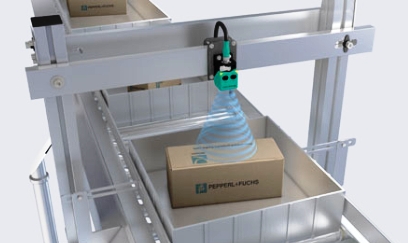Ultrasonic sensors
 Ultrasound, a person does not perceive sound with a frequency above 16 kHz, however, the speed of its propagation in the air is known and is 344 m / s. With data on the speed of sound and its propagation time, it is possible to calculate the exact distance that the ultrasound wave has traveled. This principle is the basis of the operation of ultrasonic sensors.
Ultrasound, a person does not perceive sound with a frequency above 16 kHz, however, the speed of its propagation in the air is known and is 344 m / s. With data on the speed of sound and its propagation time, it is possible to calculate the exact distance that the ultrasound wave has traveled. This principle is the basis of the operation of ultrasonic sensors.
Ultrasonic sensors are widely used in various production areas and in some way are a universal tool for solving many problems in the automation of technological processes. Such sensors are used to determine the distance and location of various objects.
Determining the level of a liquid (for example, fuel consumption in transport), detecting labels, including transparent ones, monitoring the movement of an object, measuring distance — these are just some of the possible applications of ultrasonic sensors.
As a rule, there are many sources of contamination in production, which can become a problem for many mechanisms, but the ultrasonic sensor, due to the peculiarities of its operation, is absolutely not afraid of contamination, since the sensor housing, if necessary, can be reliably protected from possible mechanical influences.

The ultrasonic sensor contains in its design a piezoelectric transducer, which is both an emitter and a receiver. The piezoelectric transducer emits a series of sound pulses, then receives the echo and converts the signal into a voltage that is fed to the controller. Read more about the use in technology here. piezoelectric effect.
The ultrasonic frequency ranges from 65 kHz to 400 kHz, depending on the transducer type, and the pulse repetition rate is between 14 Hz and 140 Hz. The controller processes the data and calculates the distance to the object.
The active range of the ultrasonic sensor is the working detection range. Detection Range This is the distance within which the ultrasonic transducer can detect an object, regardless of whether the object approaches the sensing element in an axial direction or moves through the sound cone.

There are three main modes of operation of ultrasonic sensors: opposite mode, diffusion mode and reflex mode.
For the opposite mode characterized by two separate devices, a transmitter and a receiver, which are mounted opposite each other. If the ultrasonic beam is interrupted by an object, the output is activated. This mode is suitable for harsh environments where immunity to interference is important. The ultrasound beam travels the signal distance only once.This solution is expensive because it requires the installation of two devices — a transmitter and a receiver.
Diffusion mode provided by transmitter and receiver in the same housing. The cost of such an installation is much lower, but the response time is longer than in the opposite mode.

The detection range here depends on the angle of incidence on the object and on the properties of the surface of the object, since the beam must be reflected from the surface of the detected object itself.
For reflex mode, the transmitter and receiver are also in the same housing, but the ultrasonic beam is now reflected by the reflector. Objects within the detection range are detected both by measuring changes in the distance traveled by the ultrasonic beam and by estimating the absorption or the loss of reflection in the reflected signal. Sound-absorbing objects, as well as objects with angular surfaces, are easily detected with this sensor mode. An important condition is that the position of the reference reflector does not change.
Another option for using infrasound in industry is ultrasonic welding.

